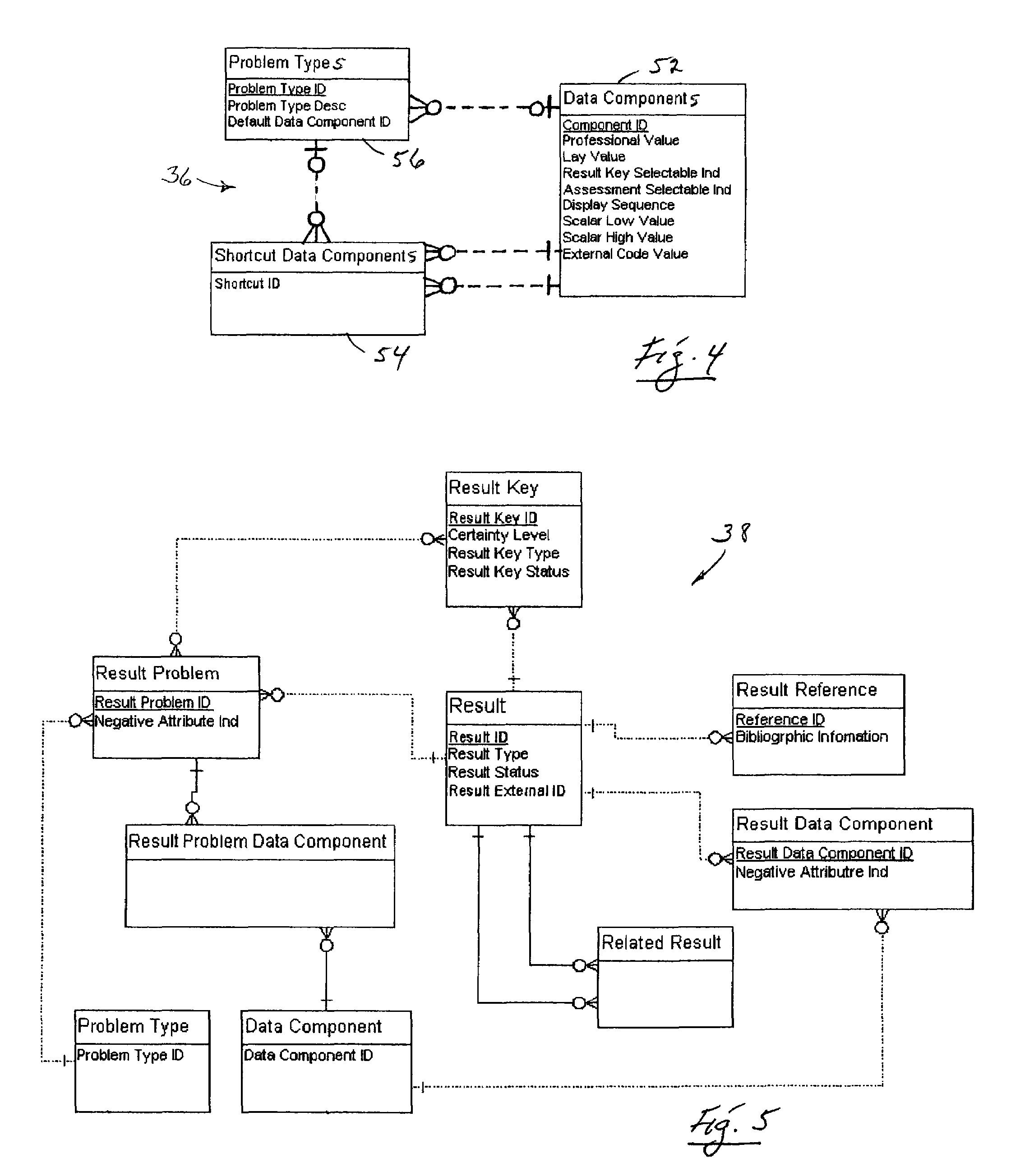Computer-based intelligence method and apparatus for assessing selected subject-area problems and situations
a computer-based intelligence and subject-area technology, applied in the field of computer-based intelligence methods and apparatus for assessing selected subject-area problems and situations, can solve the problems of significant overhaul of the system, limited the possible outcomes of assessment behavior, and general limitations of conventional artificial intelligence machines and methods, so as to enhance the performance of the structure and methodology, and achieve the effect of remarkable efficiency
- Summary
- Abstract
- Description
- Claims
- Application Information
AI Technical Summary
Benefits of technology
Problems solved by technology
Method used
Image
Examples
Embodiment Construction
[0035]Turning now to the drawings, and referring first of all to FIG. 1, indicated generally at 30 is a computer-based knowledge system (and methodology) which is (are) constructed and organized in accordance with the present invention to perform assessments regarding problems and / or situations that relate to a particular defined field, or domain, of knowledge. As was mentioned earlier herein, system and methodology 30 will now be described in relation to the knowledge domain of medicine, though it should clearly be understood that the general structures of system and methodology 30, as illustrated in FIG. 1, are universal with respect to all selectable domains or fields of knowledge. Additionally, much of the invention description which now follows will be presented from a systemic rather than a methodological point of view. This systemic point of view will be understood to function as a fully enabling disclosure and description of the related, implemented methodology of the invent...
PUM
 Login to View More
Login to View More Abstract
Description
Claims
Application Information
 Login to View More
Login to View More - R&D
- Intellectual Property
- Life Sciences
- Materials
- Tech Scout
- Unparalleled Data Quality
- Higher Quality Content
- 60% Fewer Hallucinations
Browse by: Latest US Patents, China's latest patents, Technical Efficacy Thesaurus, Application Domain, Technology Topic, Popular Technical Reports.
© 2025 PatSnap. All rights reserved.Legal|Privacy policy|Modern Slavery Act Transparency Statement|Sitemap|About US| Contact US: help@patsnap.com



